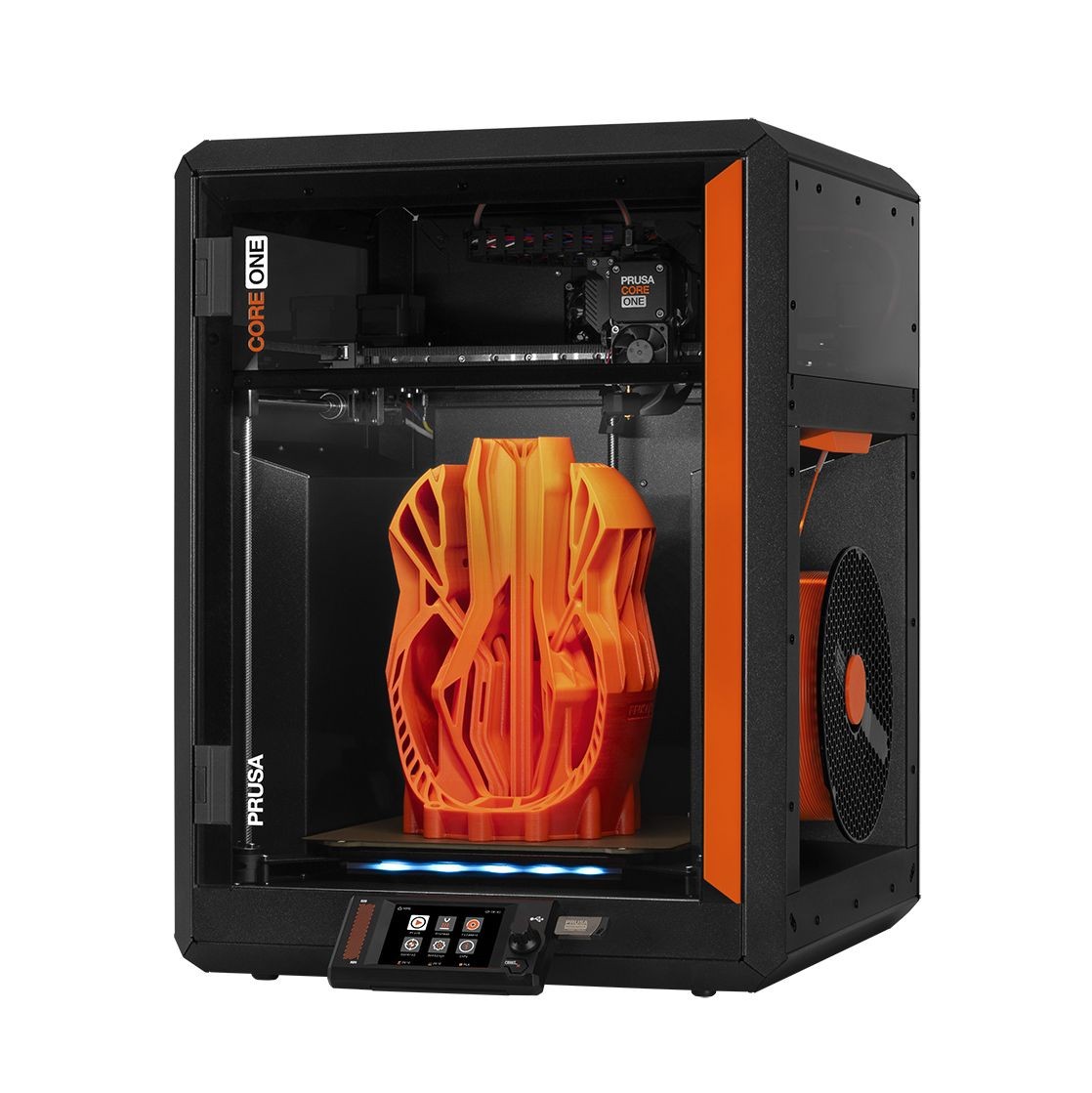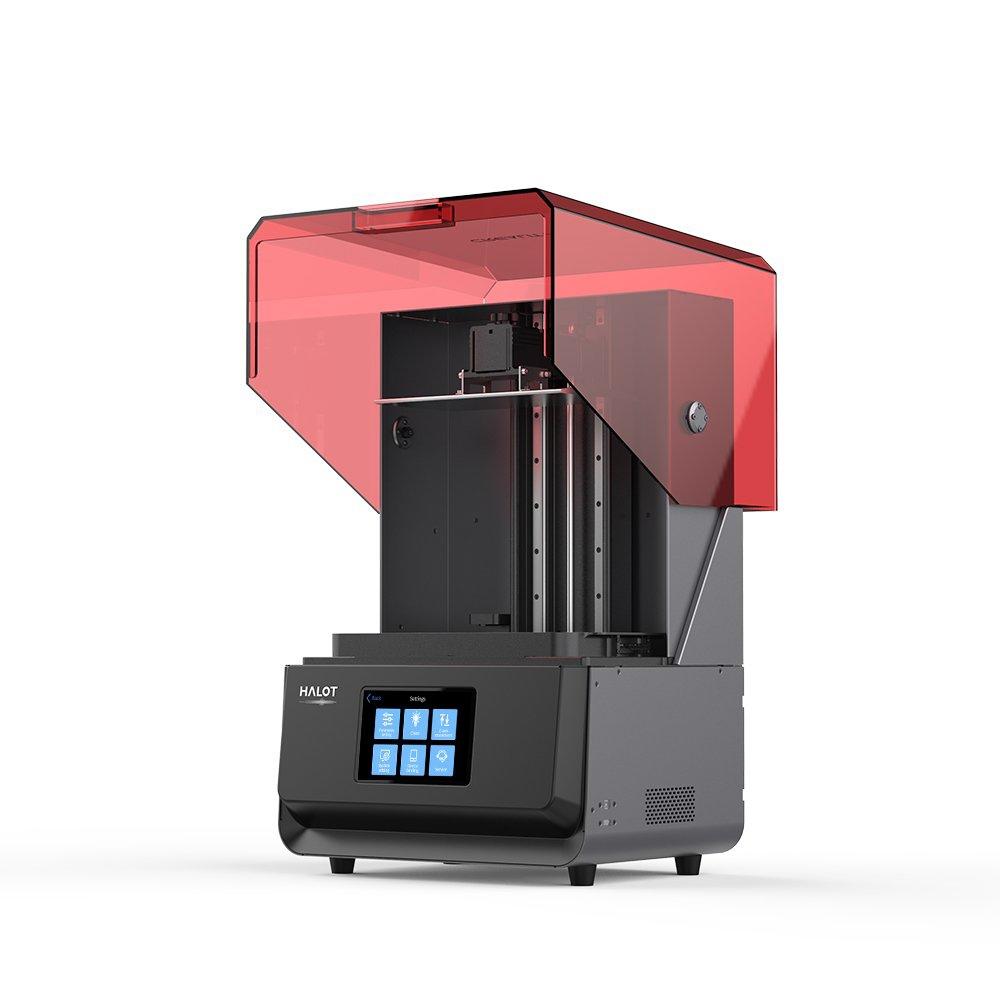Compare Core One vs Halot Max
Comparison between the best 3D printers
Choose the best 3D printer at the best price. The cheapest 3D printers are here.
Buy a 3D printer here with 3D Fila.
 |
 |
|
| Model | Core One |
Halot Max[BUY Halot Max] |
| Printing Material | Filament | Resin |
| Buy Filament for Prusa Core One | Buy Resin forCreality 3D Halot Max | |
| Estimated price | $1200,00 | $3000,00 |
| Manufacturer | Prusa | Creality 3D |
| Release Year | 2025 | 2021 |
| Print Volume [mm] | 250x220x270 | 293x165x300 |
| Printer Size [mm] | 385x340x620 | 480x387x770 |
| Weight [kg] | 14 | 32,5 |
| Power Loss Recovery | YES | NO |
| Maximum Resolution [mm] | 0,01 | 0,03 |
| Processor | xBuddy 32 bit | |
| Display | Touchscreen 3,5'' | Display touchscreen 5'' |
| Power Supply | 240 W | |
| Connectivity | SD | SD / USB / Wi-Fi |
| Operating systems | Windows, Linux e Macbook | Windows, Mac, Linux |
| Date of registration in the system | 2024-11-27 | 2022-11-04 |
| Release date | 2025 | 2021 |
| Extra features | The Prusa Core One is a CoreXY 3D printer featuring a robust steel frame, a 3.5" touchscreen, and a heated chamber for technical filaments. It offers 360° cooling for improved print quality and supports upgrades from the MK4S model. With a compact design, a print volume of 270x250x220 mm, and compatibility with the MMU3 for multi-color printing, it stands out for its ease of maintenance, precision, and speeds up to 260% faster than the MK3S+. | The Halot Max printer stands out for its large print size (293 x 165 x 300 mm) and uses SLA technology. It has an integral light source for improved accuracy and a strong core with an advanced operating system. Its Z-axis module ensures high precision, supported by efficient slicing software. The machine offers online OTA updates and boasts an adjustable layer thickness between 10 and 200 microns. Its XY-axis resolution is 3840*2160, with 0.05 mm accuracy, and an integral 405nm light source. The printer includes a 5" touchscreen and multiple connectivity options, such as USB, Creality Cloud, and HALOT BOX WiFi. With cutting-edge technology, the Halot Max is ideal for printing small models with uniform precision, thanks to its self-developed lighting system and stable printing mechanism, which includes dual linear guides, ball screws, and an intelligent brake system. |
| Support for multiple colors and materials (AMS and CFS) | YES | NO |
Notes * |
||
| Cost-benefit | 7 / 10 | 5 / 10 |
| Hardware | 6 / 10 | 1.2 / 10 |
| Tela | . | . |
| Print volume | 3 / 10 | 3 / 10 |
| Performance | 4 / 10 | 9 / 10 |
| [BUY Halot Max] |
Conclusion |
| In comparing the Prusa Core One and the Creality 3D Halot Max, several factors come into play that cater to different user needs and preferences. The Prusa Core One offers a more affordable option, ideal for hobbyists and those new to 3D printing, with its compact design, impressive print speed, and robust construction. Its features, such as power loss recovery, multi-color printing capability, and compatibility with a range of filaments, make it a versatile choice for various printing projects. Additionally, the Core One’s maximum resolution and 360° cooling system enhance its capability to produce high-quality prints. Conversely, the Halot Max is geared towards professionals and users requiring precision and larger print volumes. Its SLA technology and integrated light source provide superior printing accuracy, making it suitable for detailed projects. While it comes at a higher cost, the advanced features such as various connectivity options, OTA updates, and the ability to adjust layer thickness can justify the price for dedicated users. Ultimately, the choice between these two printers should be guided by budget considerations and specific printing needs. For those seeking a cost-effective, reliable printer for general use, the Prusa Core One holds an edge. However, for professionals who prioritize precision and advanced features, the Halot Max represents a significant investment with potential for high-quality output. Each printer serves distinct purposes, ensuring that users can find a suitable option based on their individual requirements. |

